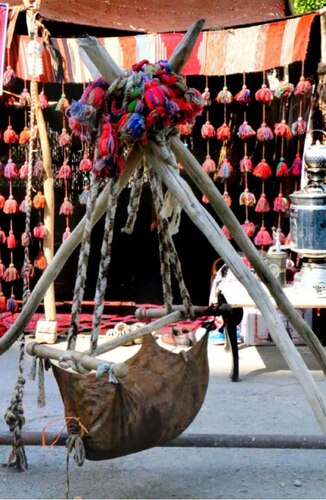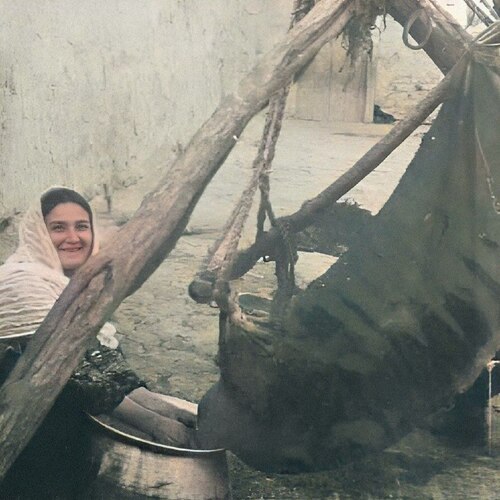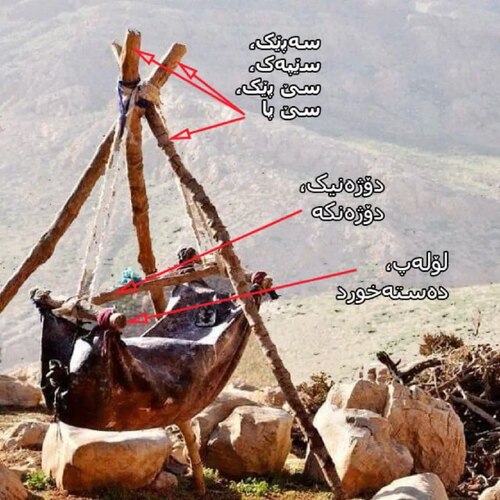Mashka (Musk)
It is an animal's skin that has been cleaned and changed into a container that is used to change yogurt into butter and Dough.
Mashka Jen
A person who moves the Mashka (Musk) forward and backward. The Mashka can be theirs or someone else's.

Cleaning Mashka
Making the skin ready to be made into Mashka.
In order to make Mashka, they wrap several layers of farm animals' skin around one another and they keep it until it releases a smell so that it would easily be separated from the hairy part. Now they cook a kind of salty soup made of Dough called Dokuliw mixed with some local herbs and vegetables and then they use knives and razers to peel off the hair from the skin. Then they boil the skin with some plants that are red so that the skin color would change into crimson. Finally, they fill it with wheat and they hang it on the ceiling of their bakery room so that it would smell like smoke.
Dying Mashka
They use oak tree coals or some other kinds of dried bushes and thorns that are burned into ashes to polish the Mashka with it to dye it.

Halal/ Ardaw/ Palou
Boiling flour, water, and pennyroyal plant together in order to make the Mashka soak in it. They also add some salt and sumac to it.
Halal dan
Cleaning the animal skin with Halal in order to make it easier to peel off the hair.
Halal Girtnawa
Making Halal for peeling off hair.
Sewing Mashka
Sewing the bottom part of Mashka.

Moraki
It is a method of sewing in a way that it can firmly sew the layers of the Mashka together and this method is used to sew the bottom and top part of it. They spin two- or three-ply wool, then they make a hole in it with a long needle and finally they sew it with another needle. It does not let any liquid leak out of it. They sew from top to bottom of Mashka with Moraki.
Ban Mashka
The thread that is used to tie the Mashka gap with it.
Doramben/ Zarben/ Zarmben
A thread used to tie the part of Mashka that is used to pour in the yogurt.
Pishk
Sometimes the Mashka can be pierced so they use different things such as cherry trees, pumpkins, or the branches of dried thorns to seal the holes.
Pishk Ledan/ Pinj Kirdn
To poach a piece of cherry tree wood, pumpkin, or dried thorns into the holes made on the Mashka.
Pasha Mashk
That part of Mashka that is at the back of it.
Lamashka
One side of Mashka.
To carry Lamashk with someone
Sometimes people believed that some men or women had a positive energy around them which would make them able to derive more butter from the Mashka so other people would ask them to carry Mashka with them so that their Mashka would make more butter.

Dar Mashk/ Sepak
Three pieces of logs that are screwed into the ground for the Mashka to be hanged on them.
To set up Sepak
Screwing the Sepak logs firmly in the ground and tying them with ropes.
Lolap/ Darlolap
Well-polished logs for the Mashka to be kept straight with them. One is tied to the front part of Mashka, the other is tied to the back of it.

Newdar
Another piece of log tied to the middle of the Lolaps.
Dojang/ Dojyng/ Dwejing
That piece of wood that is poached into the Lolap.








